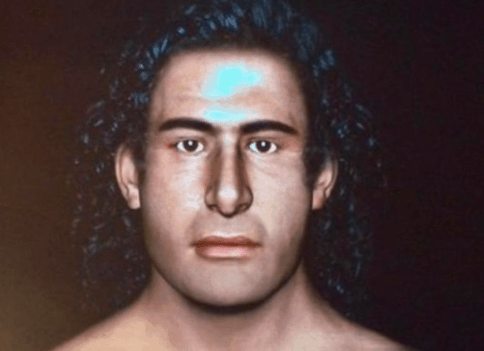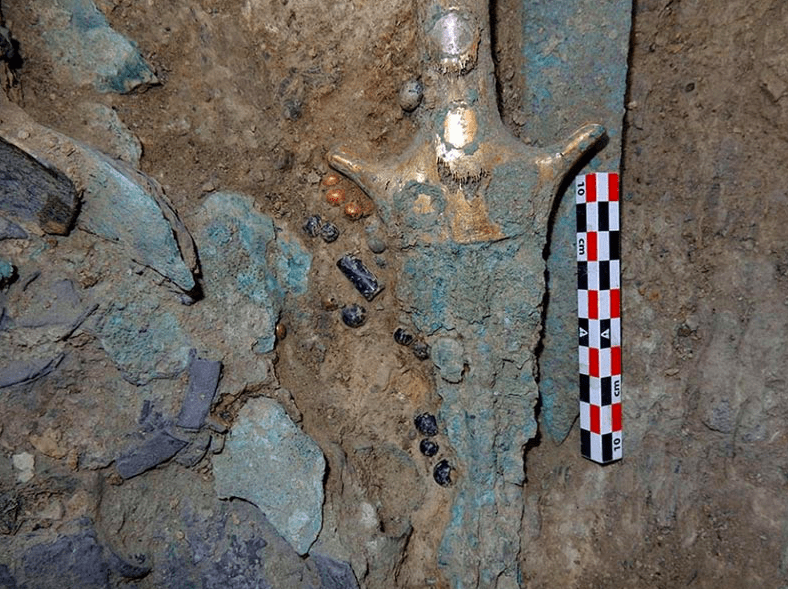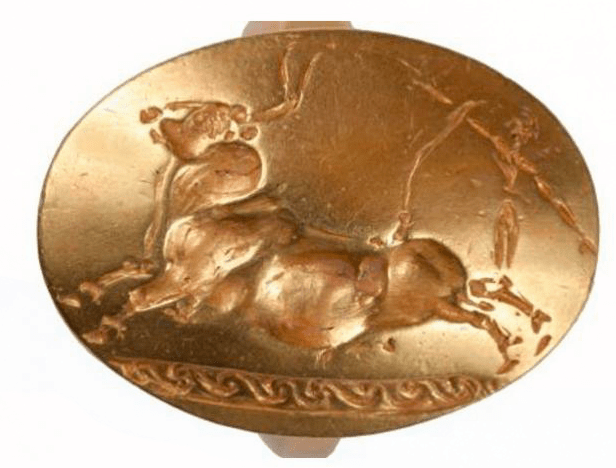
Researchers believe that a Bronze Age skeleton found near the Mycenaean Palace of Nestor was once a man with long black hair.
The grave of the 30- 35-year-old warrior was discovered by Sharon Stocker and Jack Davis, husband and wife team from the University of Cincinnati- during their 2015 excavations at the Palace of Nestor on Greece’s Peloponnese peninsula. The man was buried in a shaft grave that measured 5 ft. (1.5 meters) deep, 4 ft. (1.2 meters) wide, and 8 ft. (2.4 meters) long.
Stocker and Davis, along with other UC staff specialists and students, stumbled upon the undisturbed and intact tomb last May while excavating near the city of Pylos, an ancient city on the southwest coast of Greece.

Inside they discovered the well-preserved remains of what is believed to have been a powerful Mycenaean warrior or priest in his early- to mid-30s who was buried around 1500 B.C. near the archeological excavation.
Immortalised in Homer’s “Odyssey,” the large administrative centre was destroyed by fire sometime around 1180 B.C., but remains the best-preserved Bronze Age palace on the Greek mainland.
Their reconstruction of his appearance was based on an analysis of his skull and an artifact recovered in his rich grave and was one of the topics presented on October 6, 2016 at The American School of Classical Studies in Athens, Greece.
Greek media reports the image of the Griffin warrior’s face was created by Lynne Schepartz and Tobias Houlton from the University of Witwatersrand, South Africa.
Schepartz and Houlton based their reconstruction on the man’s skull and a stamp which was found alongside his remains. Sharon R. Stocker, one of the University of Cincinnati archaeologists who unearthed the tomb in 2015, claims the stamp provided an inspiration for the long black hair shown in the representation and “It seems he was a handsome man,” she said. That stamp is one of the artifacts Stocker and the rest of the team will make public next year.
Apart from his weapons - a bronze sword with a gold and ivory handle and a gold-hilted dagger, Holloway wrote that the archaeologists found “gold rings, an ornate string of pearls, 50 Minoan seal stones carved with imagery of goddesses, silver vases, gold cups, a bronze mirror, ivory combs, an ivory plaque carved with a griffin (from which the tomb received its name) and Minoan-style gold jewellery decorated with figures of deities, animals, and floral motifs.”

The four gold rings which were found in the tomb also made worldwide news for their magnificent craftsmanship and the tales that accompany their designs. Generating global attention, it was also included in a feature in the New York Times.
The researchers plan to further explore more in upcoming publications and promise to open new doors into the understanding of the nascent Mycenaean belief system at a transitional time when Minoan works first began to gain importance on the Greek mainland, Davis and Stocker say.
“What this allows us to do gets us beyond just thinking in terms of mere borrowing of prestige items or items to show off for display,” explained Davis. “This starts to get us into an understanding of actual beliefs and ideas and an ideology that existed in this time of the formation of the Mycenaean civilisation, which is very difficult to get at.”
“We have a snapshot here, captured in time, with the objects as they were placed around this guy,” said Davis. “We can look at this not from an outside perspective, but from an insider’s perspective and imagine why and how they chose to place them in the grave.”
* Images courtesy of University of Cincinnati

